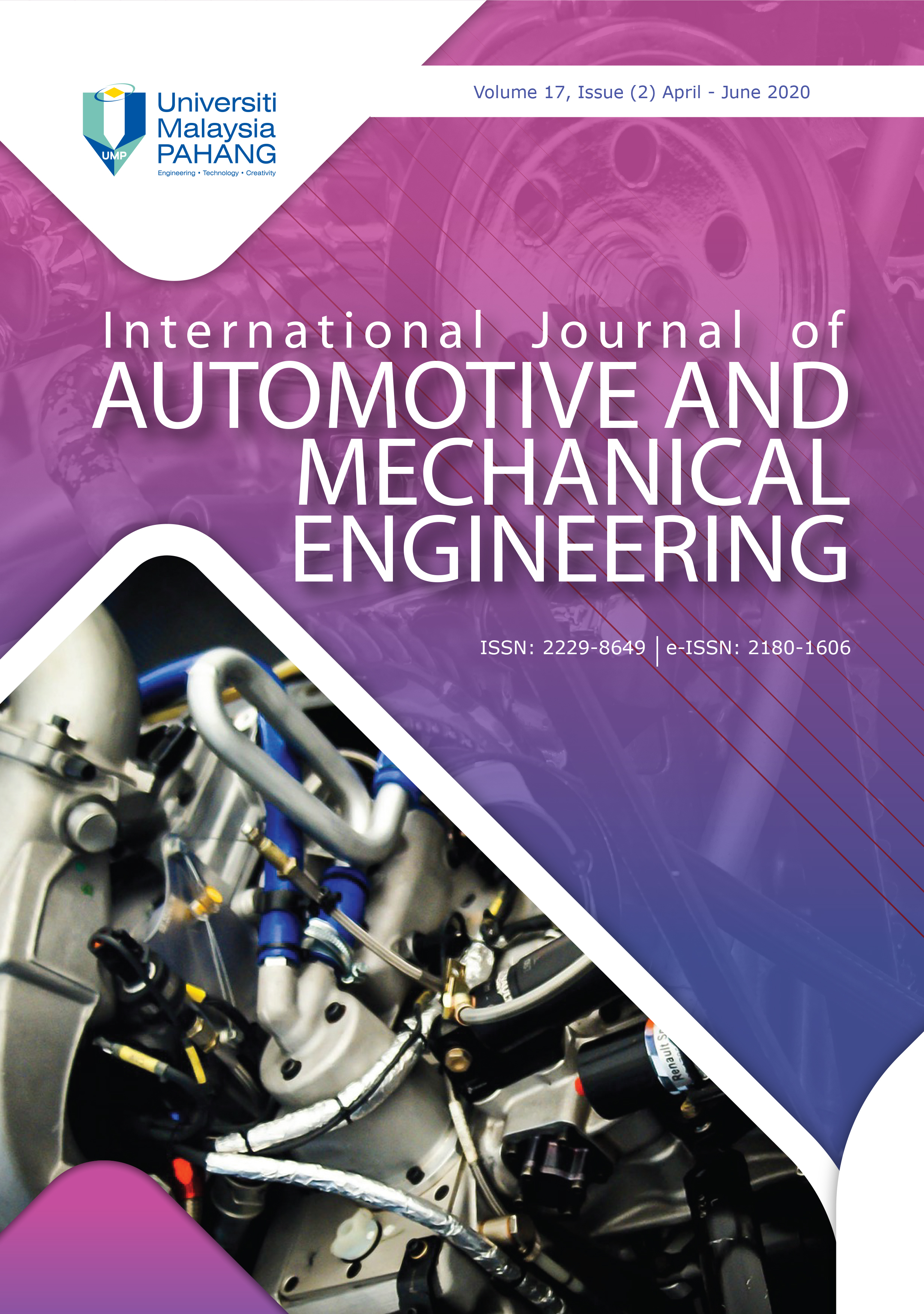Vibration Control of Vehicle by Active Suspension with LQG Algorithm
DOI:
https://doi.org/10.15282/ijame.17.2.2020.19.0600Keywords:
Passive suspension, Active suspension, Linear quadratic Gaussian, Vibration, Ride performanceAbstract
In this paper, the ride performance of a vehicle with active suspension and Linear Quadratic Gaussian (LQG) controller has been studied and is compared to the performances of a traditional passive suspension system. The study includes variables that are related to a passenger’s comfort: vertical position, vertical velocity, pitch angle, pitch velocity, roll angle, and roll velocity. The performances of the two systems are evaluated by maximum values and root mean square (RMS) of the variables when riding on a sinusoidal road profile. The simulation results show that the vehicle with active suspension and LQG controller performs better than passive suspension system where the maximum values decrease by 85.77%, 92.73%, 50.31% 86.83%, 89.41%, 43.28%, and RMS values decrease by 88.59%, 92.36%, 42.99%, 87.61%, 90.85%, and 42.79% for vertical position, vertical velocity, pitch angle, pitch velocity, roll angle, and roll velocity, respectively.







